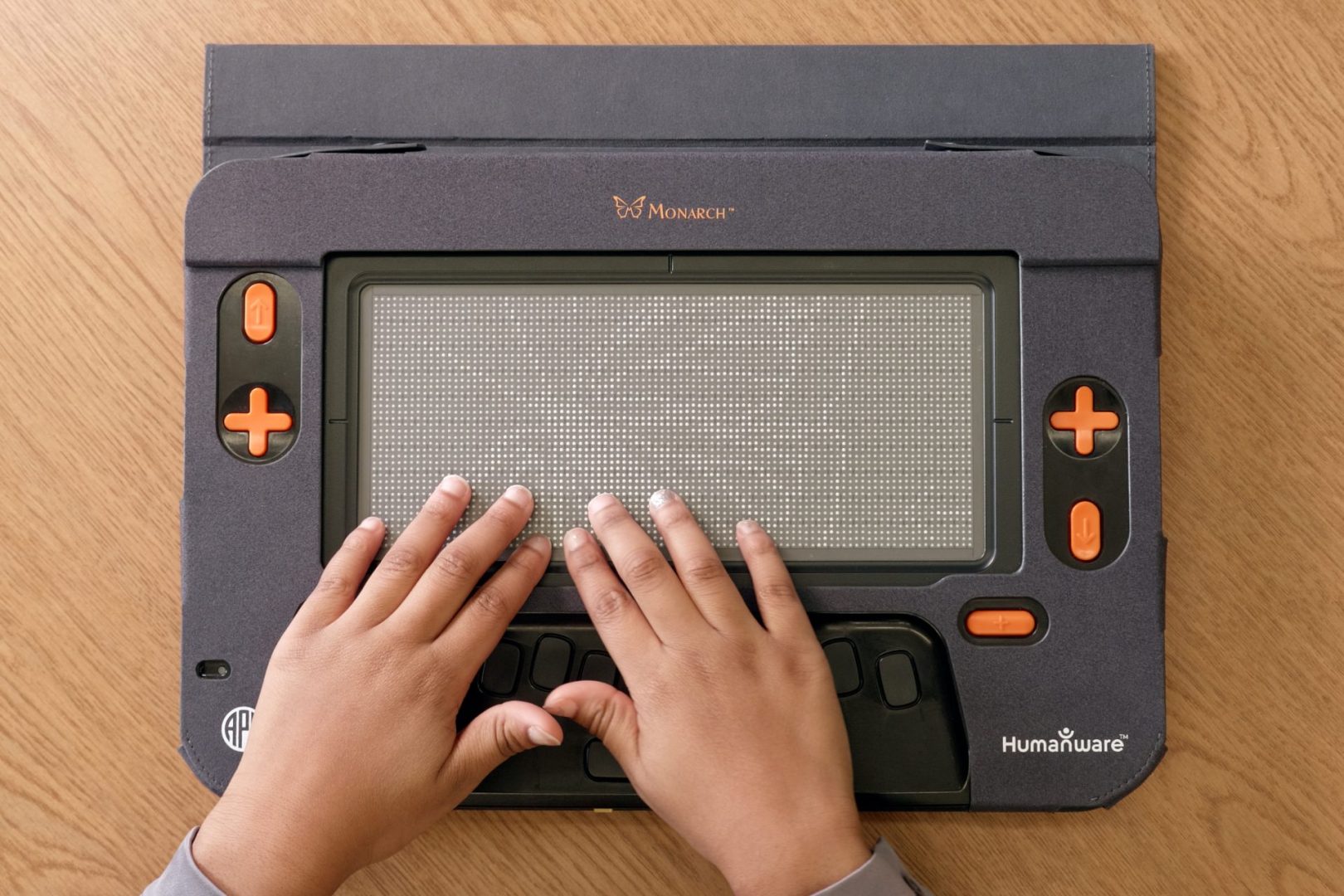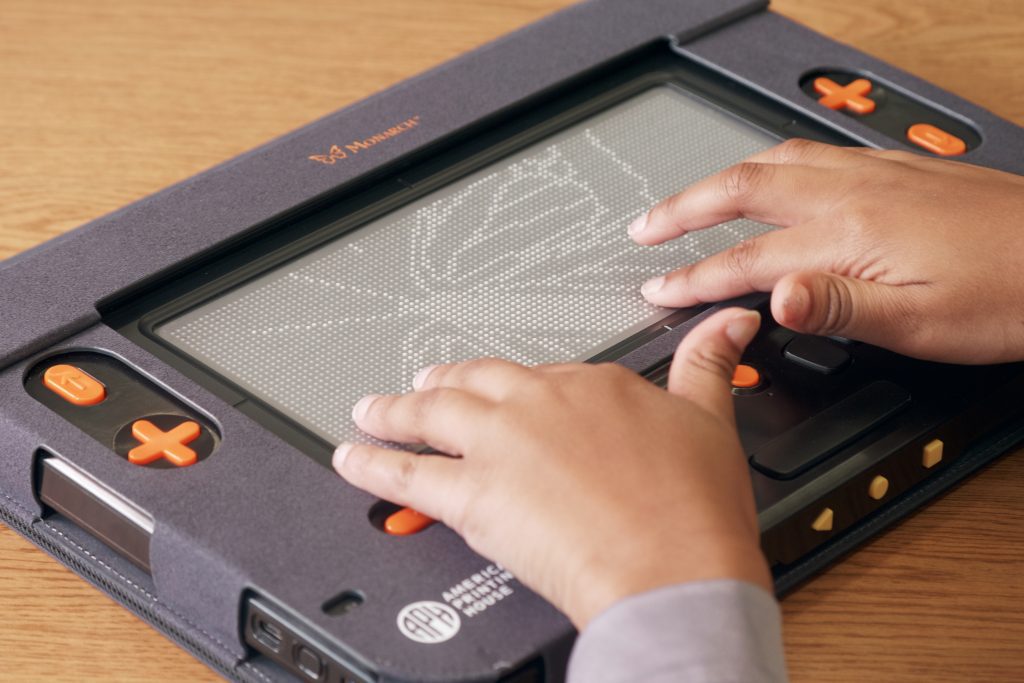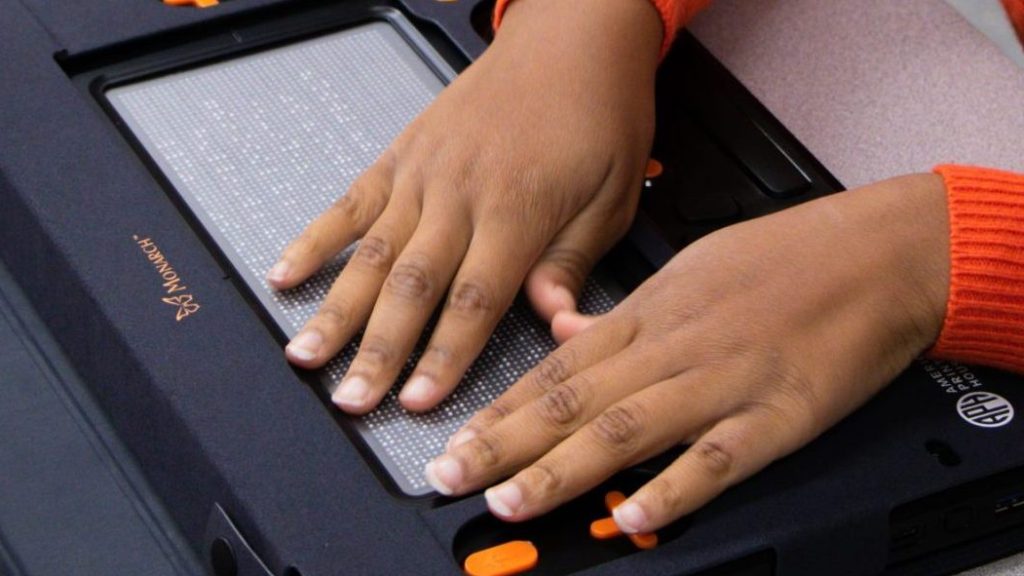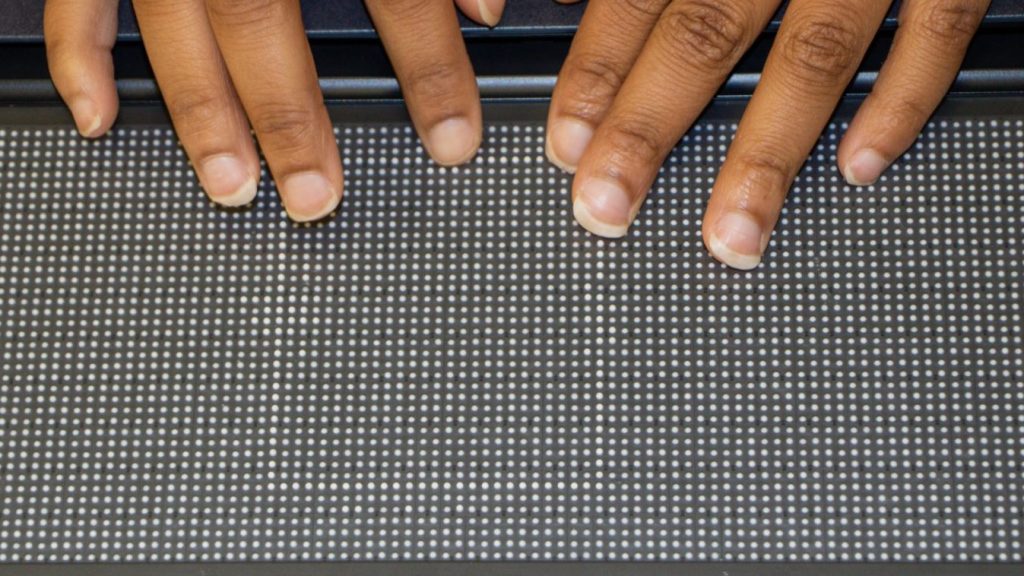Monarch Field Testing Reaches Halfway Point

Friday, November 3rd marked the halfway point for Monarch Field Testing. Composed of three, two-week units of course content, the goal for the six-week field testing is to gather user experience and data from teachers and students from many areas and regions of the United States. With a current value of $20,000 per Monarch plus shipping, it’s a million-dollar endeavor not including man hours. This goes to show just how committed APH is to getting it done right.
A national effort, there are over 35 field testers offering feedback to improve the development of the device. “There was a much bigger push for field testing with the Monarch to get the feedback we need from teachers before it goes into production because it was such a flagship product,” says Jason Martin, Technical Innovations Product Manager at APH. “To have the number of field testers that we have this early in the stage of field testing is monumental, considering not only the number of people, but also the number of Monarch devices that were required. The Monarch is going to be a game changer for braille.”
Centering around the skills students need to use the Monarch as a braille reading tool, the curriculum these testers are currently working through guides them into their first foray into the new world of digital tactile graphics. The curriculum highlights the basics of how to use the device, such as: ‘Can you open a document? A tactile graphic? Can you move around it and save it?’ “What we’re looking for is their preference of tactile graphics versus printed out graphics. Using BRF files, we ask the students to sit and read through a book for 20 minutes, taking indicators from teachers every step of the way,” says Jason. Many of these same field testers will get to keep their Monarch devices and go on to later participate as mentors during outreach training.
Reactions and responses from field testers have been incredible to read as they progress through all of the features included in the Monarch. “We’ve received very effective communication from teachers and students,” says Jason. “A lot of teachers and students have reported that the Monarch device is something they may not have ever seen in their classroom without field testing. Now they’re saying that it’s going to be rough to go back to teaching any other way.” One of the notable key features of the Monarch is that it allows teachers and students to access the APH tactile graphics image library on-demand, a collection of over 2,000 digital graphics. “Giving these teachers access to cutting edge technology empowers them as TVIs. As one so aptly said, ‘I feel like I’m a cutting edge TVI.’”
Feedback from the Monarch Field Test Survey 1
“Showing the Monarch to my students, especially the ones that do not like doing work in braille was a great means of encouragement. When they saw that they had access to a tactile graph and could feel and explore the pictures on a neat electronic device, it really changed their attitude towards learning. The students also loved how this was like a braille tablet.”
“The students were amazed studying the 50 states map. They were excited to get the map so quickly and further grasp where each state was located. Some students were excited to read Alice in Wonderland with ten lines of braille showing.”
“One student was able to write double what they would normally write, and they were able to transition to braille much faster. The student came eager to learn. This student was a resistant braille user and now comes to class engaged and ready to learn. Another third-grade student mentioned that ‘It is so much easier to navigate, fix mistakes, and likes that it speaks.’ It increases their ability to express themselves as compared to a braille writer.”
“It is extremely nice to have one keystroke to memorize and to know you can fall back on accessing them through the context menu. I am a huge fan of context sensitive help and context sensitive menu’s being the best way forward to provide that additional functionality.”
“My students who are proficient in braille note takers absolutely love the Monarch. They love to explore and play with the device. It is fun for me to see how they show one another after they learn how to navigate the Monarch.”
“One of the middle school students I teach was interested in creating a shirt that read ‘Making Braille History’ in braille to wear while finishing Monarch lessons.”
“It’s been fun! My student and I are enjoying figuring it out. He is usually a very rigid student who can’t vary from routine without difficulty, and this testing with the Monarch has helped him deviate from our routine and increased his flexibility.”
“They were all excited at the change and difference it would be to carry only one device compared to all of the books. They loved the idea that they would be exposed to graphs and were using an android device.”
Share this article.
Related articles

Mastering the Monarch
The braille metamorphosis has begun! More than 40 teachers from across the U.S. are gathering in Orlando, FL prior to...

The eBRF Revolution
As you may have heard, we are working on two game-changing projects that, together, will alter the way we access...

The Next Stop on the Holy Braille Highway: 2022 and Beyond
As 2022 comes to an end, we’re taking a look back at the exciting developments and milestones that were accomplished...
